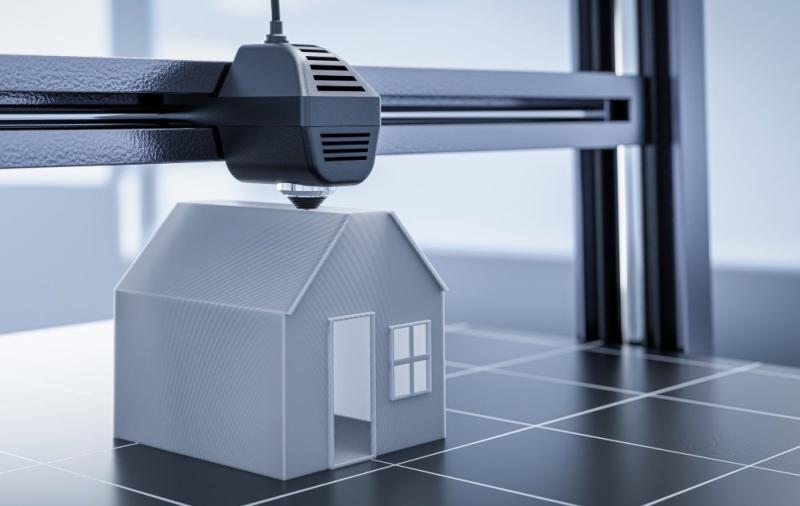The advent of 3D printing technology in construction represents a seismic shift that could fundamentally alter how buildings are conceived, designed, and constructed, with roofing systems positioned at the forefront of this transformation. Unlike traditional construction methods that rely on standardized materials and labor-intensive installation processes, 3D printing offers the possibility of creating custom architectural elements with unprecedented precision, speed, and material efficiency that could revolutionize both the technical and business aspects of the construction industry.
Current 3D printing applications in construction have already demonstrated remarkable capabilities that hint at future possibilities. Large-scale concrete printers can now construct entire building shells in days rather than weeks, while specialized printers designed for roofing applications can create complex drainage systems, custom flashing components, and even decorative elements that would be prohibitively expensive to manufacture through traditional methods. These early applications suggest that 3D printing’s impact on roofing will extend far beyond simple material substitution to encompass entirely new approaches to design, customization, and installation.
The material science innovations driving 3D printing development are creating new possibilities for roofing performance characteristics. Advanced polymer composites, fiber-reinforced concrete mixtures, and even bio-based materials can be precisely deposited to create roofing systems with embedded channels for water management, integrated insulation properties, and variable density structures that optimize weight distribution and thermal performance. These materials can be formulated to include UV-resistant additives, self-healing polymers, or even photovoltaic elements that transform the entire roof surface into an energy-generating system.
Customization capabilities represent perhaps the most transformative aspect of 3D printing for roofing applications. Traditional roofing systems require standardized components that must be adapted to fit specific architectural requirements, often resulting in compromises between design intent and practical constraints. 3D printing eliminates these limitations by enabling the creation of perfectly fitted components for any architectural configuration. Complex curved surfaces, intricate drainage patterns, and custom architectural details can be produced as easily as simple rectangular panels, opening up new possibilities for architectural expression and functional optimization.
The speed and efficiency advantages of 3D printing could dramatically reduce project timelines and labor requirements. While traditional roofing installation requires teams of skilled workers performing repetitive tasks over extended periods, 3D printing systems can operate continuously with minimal human intervention, potentially completing complex roofing systems in fractions of the time required by conventional methods. This efficiency gain could translate into significant cost savings and faster project completion times that appeal to time-sensitive customers and developers.
Quality control and consistency represent additional advantages of 3D printing technology. Human error, material inconsistencies, and weather-related installation delays that plague traditional construction can be minimized through automated manufacturing processes that operate under controlled conditions. Each printed component can be manufactured to exact specifications with consistent material properties, potentially reducing warranty claims and improving long-term performance reliability.
Customer expectations will inevitably evolve as 3D printing capabilities become more widely available and understood. Homeowners and developers who become familiar with the customization possibilities offered by 3D printing will likely expect higher levels of personalization and design flexibility than traditional roofing systems can provide. The ability to incorporate custom logos, architectural details, or functional elements directly into roofing materials could create new market segments and customer demands that traditional contractors will struggle to meet.
The sales and estimation process for 3D printed roofing systems will require fundamentally different approaches than traditional roofing sales. Instead of selecting from catalogs of standardized products, customers will work with designers to create custom solutions tailored to their specific requirements and preferences. This consultative design process will require more sophisticated software tools, longer sales cycles, and higher levels of technical expertise from sales teams. Digital visualization tools will become essential for helping customers understand the possibilities and make informed decisions about custom design options.
CRM systems will need to evolve to support these more complex customer relationships and project requirements. Traditional roofing CRM systems designed for standardized products and straightforward installation processes will be inadequate for managing the design consultations, custom manufacturing timelines, and ongoing customer communication required for 3D printed roofing projects. Advanced CRM platforms will need to integrate with design software, manufacturing scheduling systems, and project visualization tools to provide comprehensive support for these more sophisticated customer relationships.
The business model implications of 3D printing extend beyond individual projects to encompass new service offerings and revenue streams. Companies that invest in 3D printing capabilities could develop design services, custom manufacturing capabilities, and specialized installation expertise that differentiate them from traditional contractors. Rather than competing primarily on price and availability, these companies could compete on innovation, customization capabilities, and technical expertise, potentially commanding premium pricing for their specialized services.
Training and workforce development will become critical success factors as 3D printing technology matures. Traditional roofing skills will need to be supplemented with digital design capabilities, manufacturing system operation, and quality control processes that are fundamentally different from conventional construction methods. Companies that invest early in developing these capabilities will be better positioned to capitalize on market opportunities as customer awareness and demand for 3D printed roofing solutions grows.
The integration of 3D printing with other emerging technologies like artificial intelligence, IoT sensors, and sustainable materials could create synergistic effects that accelerate adoption and expand market possibilities. Rather than simply replacing traditional roofing methods, 3D printing could enable entirely new approaches to building design and construction that customers haven’t yet imagined, creating opportunities for forward-thinking companies to lead market transformation rather than simply respond to it.
Online platforms where customers can explore these possibilities will likely become central to the customer experience, providing interactive design tools and instant pricing for custom solutions that bridge the gap between traditional estimation processes and the personalized design consultation that 3D printing enables. For more on this, get roof estimates here.





























